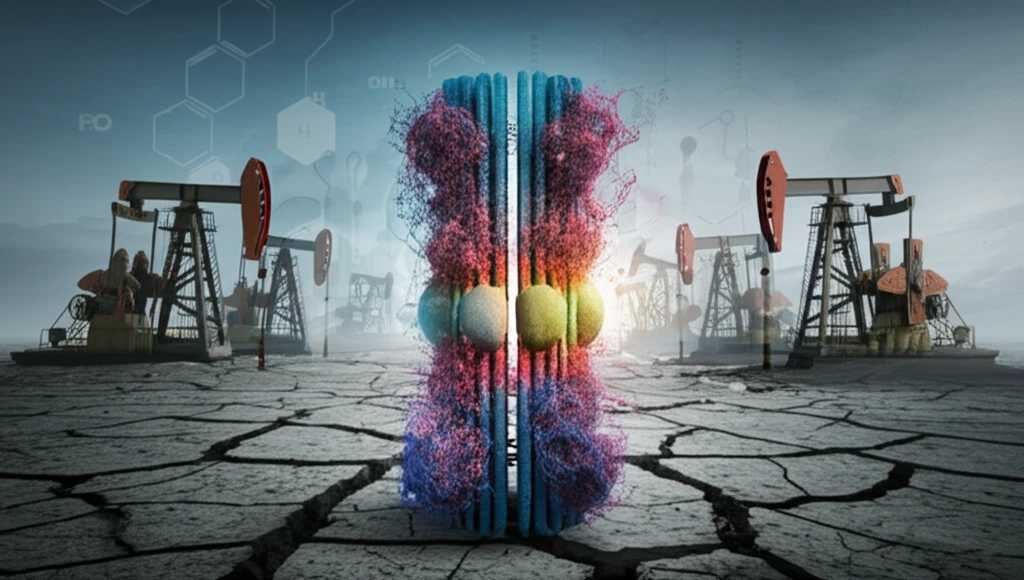
Fracking's Hidden Threat: How Wastewater Could Be Disrupting Your Hormones
"New research sheds light on the endocrine-disrupting potential of hydraulic fracturing flowback and produced water, raising concerns about water contamination and public health."
Hydraulic fracturing, or "fracking," has revolutionized energy production, unlocking vast reserves of oil and natural gas. However, this process comes with environmental concerns, particularly regarding the flowback and produced water (HF-FPW) that returns to the surface. This wastewater contains a cocktail of chemicals, including salts, metals, and naturally occurring organics, as well as the chemical additives used in the fracking process itself. These substances have raised alarms about potential contamination of aquatic environments and the subsequent effects on wildlife and human health.
A growing body of research suggests that HF-FPW can disrupt biological processes, especially those related to the endocrine system. The endocrine system, which regulates hormones, is vital for development, reproduction, and overall health. When disrupted, it can lead to a cascade of adverse effects. Recent studies have indicated that HF-FPW exposure can alter gene expression and interfere with biotransformation processes, prompting scientists to investigate the specific mechanisms behind these disruptions.
A recent study published in "Environment International" delves deeper into understanding the endocrine-disrupting potential of organic fractions extracted from HF-FPW. This research focuses on how these organic extracts affect receptor-binding activity, utilizing several transactivation assays to assess the impact on key nuclear receptors. The findings reveal some concerning insights into the temporal and spatial variability of endocrine-disrupting potentials in HF-FPW, underlining the need for careful risk assessment and remediation strategies.
What Makes Fracking Wastewater So Disruptive to Hormones?

The study examined six HF-FPW samples collected from two wells at different time points after the start of flowback. The researchers separated these samples into aqueous (water-based) and particulate (solid residue) phases and extracted the organic compounds from each. By analyzing these fractions, they aimed to identify which components contribute most to endocrine disruption.
- Aryl Hydrocarbon Receptor (AhR): Influences the metabolism of foreign chemicals and can lead to oxidative stress and DNA damage.
- Estrogen Receptor (ER): Vital for reproductive health and development; disruption can lead to reproductive issues and certain cancers.
- Androgen Receptor (AR): Essential for male sexual development and function; interference can affect sexual health and development.
What This Means for the Future of Fracking Regulation
This study underscores the complexity of HF-FPW and the need for comprehensive risk assessment and remediation strategies. The temporal and spatial variability in endocrine-disrupting potentials highlights that a one-size-fits-all approach to managing fracking wastewater is insufficient. Reclamation and remediation efforts must consider the specific properties of each spill, taking into account the geological formation and physiochemical properties of the injected fluid. Further research is needed to identify all the endocrine-disrupting compounds present in HF-FPW and to understand their mechanisms of action. By filling these knowledge gaps, scientists and policymakers can develop more effective strategies to protect both environmental and human health from the potential hazards of hydraulic fracturing.
